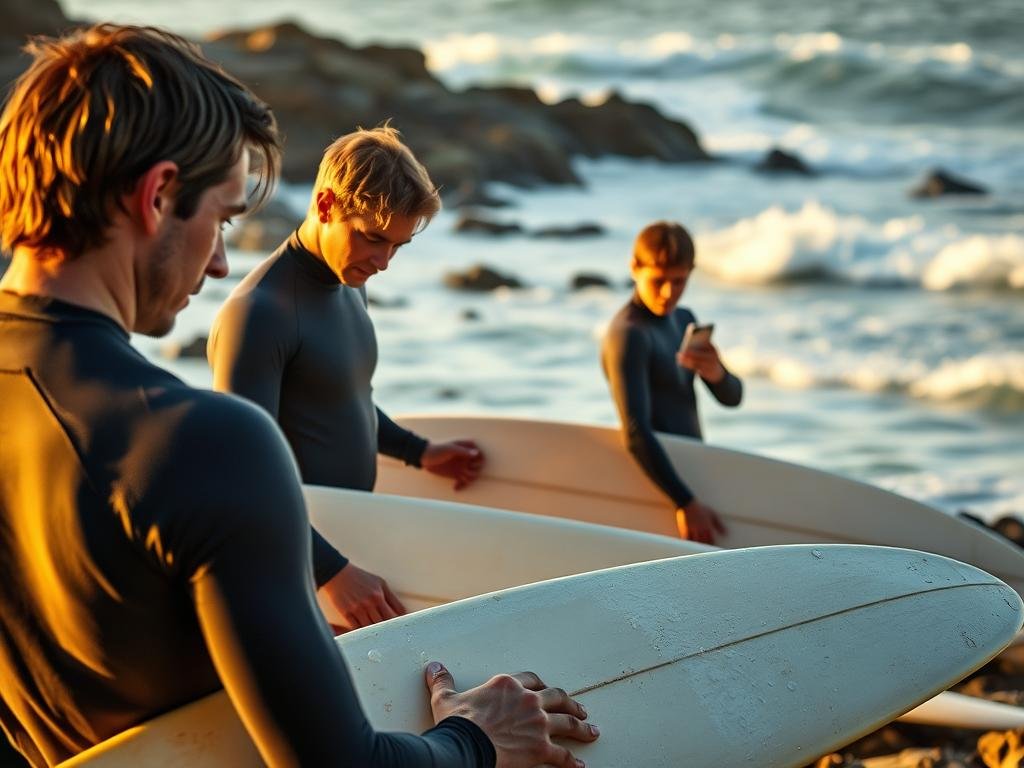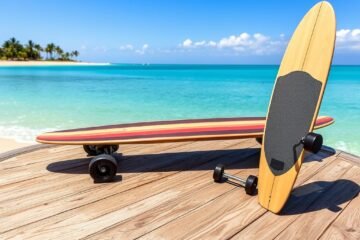Entering the world of amateur events can be an exciting step for surfers looking to improve their skills. These events often serve as a gateway to larger, professional contests like the Pipeline Masters. They provide a platform to test abilities and gain valuable experience.
One of the key benefits of participating is the opportunity to refine techniques such as wave selection and priority starts. Understanding the nuances of different formats, like 20-minute heats with 10-wave limits, is crucial for success. This knowledge helps participants make the most of their time in the water.
However, challenges like registration processes and entry fees can be daunting for newcomers. By analyzing competitors’ tactics during heats, surfers can develop strategies to overcome these hurdles. With dedication and practice, amateurs can turn these events into stepping stones for their journey in the sport.
Table of Contents
Key Takeaways
- Amateur events are a great way to gain experience and improve skills.
- Understanding competition formats is essential for success.
- Wave selection and priority starts are critical techniques to master.
- Registration processes and entry fees can be challenging for beginners.
- Analyzing competitors’ tactics can provide valuable insights.
Introduction to Surfing Competitions for Amateurs
Local and regional contests provide surfers with a platform to showcase their abilities. These events have grown significantly in the U.S., ranging from small boardriders’ gatherings to larger regional championships. For many, they serve as a stepping stone to more advanced levels of the sport.
Amateur events are typically divided into tiers based on skill and experience. Recreational contests often have entry fees between $50 and $200, while intermediate levels range from $200 to $500. Advanced events, like the Pipeline Masters, can cost up to $1,000. Registration for such prestigious contests often opens 6 to 12 months in advance.
Organizations like the World Surf League (WSL) and the US Surfing Association play a crucial role in structuring these events. They ensure fair competition and provide guidelines for participants. Choosing the right contest is essential, as divisions like shortboard and longboard cater to different skill sets.
Here’s a breakdown of typical competition tiers and their costs:
| Tier | Entry Fee Range | Skill Level |
|---|---|---|
| Recreational | $50 – $200 | Beginner |
| Intermediate | $200 – $500 | Moderate |
| Advanced | $500 – $1,000 | Experienced |
Participating in these events not only builds experience but also helps surfers connect with like-minded individuals. Whether you’re aiming for a local contest or a regional championship, these opportunities are invaluable for growth in the sport.
How to Prepare for Your First Surfing Competition
The journey to your debut event starts with careful planning. Whether you’re a beginner or have some experience, understanding the basics is essential. Observing waves for an hour before your heat can help you analyze wind and tide patterns. This practice gives you a better chance to identify the best set waves during the contest.

Physical preparation is just as important as mental readiness. Building paddle endurance and practicing breath-holding techniques can significantly improve your performance. Additionally, mastering pop-ups and balancing ensures faster recoveries, which are crucial during timed heats.
Understanding the Basics
Before diving into the event, familiarize yourself with the rules and scoring criteria. Knowing how judges evaluate maneuvers and priority can help you strategize effectively. For example, only the two best waves count, so focus on quality over quantity. Understanding interference penalties, like losing half points for dropping in on another surfer, is also vital.
Physical and Mental Preparation
Training routines should include timed practice sessions to simulate competition pressure. Nutrition plays a key role too. Stay hydrated with electrolyte drinks and keep energy bars handy for quick fuel. Mental strategies, such as visualization techniques used by pros, can help manage nerves and boost confidence.
Here’s a quick guide to essential preparation tips:
| Aspect | Tips |
|---|---|
| Physical | Build paddle endurance, practice breath-holding, and master pop-ups. |
| Mental | Use visualization, observe competitors, and stay calm under pressure. |
| Nutrition | Hydrate with electrolytes and consume energy bars for quick energy. |
For more insights into how contests work, check out this detailed guide on surf competition mechanics. With the right preparation, your first event can be a stepping stone to greater achievements in the sport.
Strategies for Success in Surfing Competitions
Mastering the art of competitive events requires a blend of strategy and adaptability. Whether you’re a beginner or an experienced participant, understanding the key elements can significantly improve your performance. From wave selection to tactical maneuvers, every decision counts.
Wave Selection and Priority Start
One of the most critical aspects is choosing the right waves. Surfers must focus on catching backup waves early in the heat to secure a strong position. According to experts, aiming for two set waves in the first 10 minutes can set the tone for the entire session.
Priority start plays a vital role in this process. Knowing when to switch to “catch any old crap” mode in the final minutes can make or break your performance. This tactic ensures you maximize your scoring potential, even under pressure.
Competition Tactics
In these contests, timing is crucial. Goading opponents into inferior waves during the final minutes can give you a competitive edge. However, ethical considerations like avoiding interference are essential to maintain sportsmanship.
Different levels require unique tactics. For example, longboard heats demand a different approach compared to shortboard formats. Adjusting your strategy based on the event type can significantly enhance your results.
Post-heat analysis is another valuable tool. Reviewing judges’ scorecards helps identify areas for improvement. This practice ensures you’re better prepared for future events.
Conclusion: Embracing the Challenge of Surfing Competitions
Taking part in amateur events offers a unique chance to grow as a surfer and connect with a supportive community. These contests serve as stepping stones, helping participants refine their skills and gain valuable experience.
Safety remains a priority while pushing your limits. Always ensure you’re prepared physically and mentally before entering the water. Balancing ambition with camaraderie helps build a positive reputation in the world of surfers.
Joining local groups or mentorship programs, like those offered by the WSL or USOA, can provide additional support and resources. These connections often lead to long-term growth and success.
Ready to take the next step? Sign up for a beginner-friendly event and start your journey today. The community awaits, ready to welcome you with open arms.


0 Comments